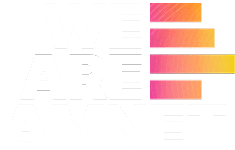As creative production evolves, in-house agencies are no longer just executional—they’re becoming strategic hubs for brand storytelling, innovation, and agility.
“In-house teams are moving beyond execution—they are becoming strategic partners. The challenge now is integrating automation and AI without losing creative integrity.” — Emma Turner
In the 2025 Global Benchmark Report for Content Production, Emma Turner, Founder of IHAR (In-House Agency Review), Dahling, shared her insights on this transformation. With experience leading in-house model transformations for major global brands like HSBC, Lloyds, EE, PMI, and Kellanova, Emma brings a strategic lens shaped by years of scaling creative operations, building top-tier talent pipelines, and simplifying complex production models across industries.
In this full interview, we explore Emma’s perspective on how in-house teams are changing, the role of AI and offshoring, and where budgets and talent strategies are heading.
Q: What do you see as the three biggest challenges for in-house teams in 2025?
Emma Turner: For brands exploring or optimizing in-house agencies (IHAs), three critical challenges emerge:
1. Ambition & Scope: Clearly defining the type of work the IHA will handle is crucial. Additionally, brands must assess their current and future agency partnership models to ensure alignment and efficiency.
2. Operating Model: A well-structured and tool-supported operating model is the backbone of success. It fosters seamless integration between marketing and creative teams, ensuring operational fluidity.
3. Talent & Partnerships: Even with the right model and scope, success hinges on people. It’s essential to build internal teams strategically and supplement them with external partners for specialized skill sets or workstreams beyond the IHA’s scope.
Establishing a strong foundation ensures IHAs deliver sustainable, best-in-class work while safeguarding against team burnout. Poor planning or an ill-defined scope can erode credibility and limit long-term impact.
At IHAR & Dahling, we collaborate with brands to design tailored IHAs—from building the business case to operationalizing the model and assembling the perfect team for today’s needs and tomorrow’s ambitions.
Q: Do you see budgets increasing, decreasing, or staying the same going into 2025?
Emma Turner: Overall, budgets are tightening, with creative agencies bearing the brunt as brands increasingly invest in in-house solutions. AI and advanced production models are reshaping spending, driving efficiency and cost reduction.
While the objective has always been to work smarter, the focus now is sharper than ever: delivering impactful results that maximize every pound spent.
Q: If in-house teams had extra budget, where would they spend it?
Emma Turner: On strategy. Planning is the cornerstone of great creative work, yet it’s often underrepresented in IHAs. Many brands rely on insight teams, but strategic planning goes deeper, crafting briefs that unlock creative potential and evaluate work effectively. This role delves into audience, brand and product truths to ensure every campaign addresses business challenges directly. Including strategists, in-house teams would elevate the creative output and align it with business goals.
Q: How are in-house and offshore teams incorporating automation and AI into content production?
Emma Turner: Automation and AI have revolutionized content creation, enabling faster, more cost-effective and highly personalized outputs. Offshore solutions, combined with AI, excel in BAU (business-as-usual) tasks, transcreation and repetitive processes.
However, while these tools enhance efficiency, they remain part of the creative toolbox; big ideas still demand human ingenuity.
The lesson is clear: leverage AI and offshore resources for routine work to free up in-house teams for high-value creative tasks.
Q: How are in-house production models evolving as we enter 2025?
Emma Turner: Production teams now require a seat at the strategic table. Gone are the days of lengthy shoots with minimal deliverables. Today, content must be channel-specific and multifaceted, addressing diverse touchpoints from social and performance marketing to experiential and retail environments.
Integrated, targeted and agile production models are essential to ensure the right work reaches the right audience at the right time. Advanced systems and tools further optimize resource allocation, minimizing redundant efforts and maximizing impact.
Q: Which services are best suited for offshoring, and what savings can you expect?
Emma Turner: Template-driven BAU work is ideal for offshoring. The true value of an IHA lies in driving creative strategy and developing content that defines and differentiates brands. Offshoring and AI not only deliver cost savings but also free up in-house teams to focus on strategic, high-impact work that resonates deeply with audiences and builds brand love.
Q: When working with external or offshore teams, how do you measure success?
Emma Turner: Key performance indicators include:
- Response Time: Timely delivery is crucial for maintaining workflow efficiency.
- Accuracy: High-quality outputs that meet brand standards.
- Customer Service and Seamless Integration: Effective communication and collaboration.
Q: How important are sustainability and DEI when selecting an external partner?
Emma Turner: Sustainability and DEI are no longer optional; they’re fundamental. It’s essential to align with partners who share your brand’s values and aspirations. Building long-term relationships with purpose-driven partners ensures mutual growth and reinforces your brand’s commitment to doing business responsibly.
Want more insights like this?
Download the 2025 Global Benchmark Report for Content Production to hear from other industry leaders and see how content production is evolving across the globe.






